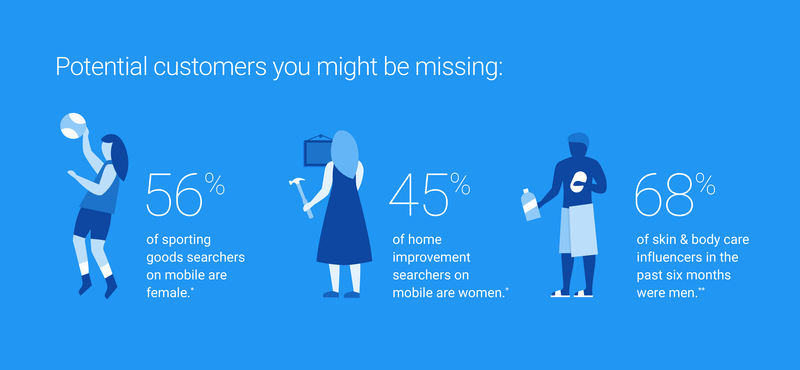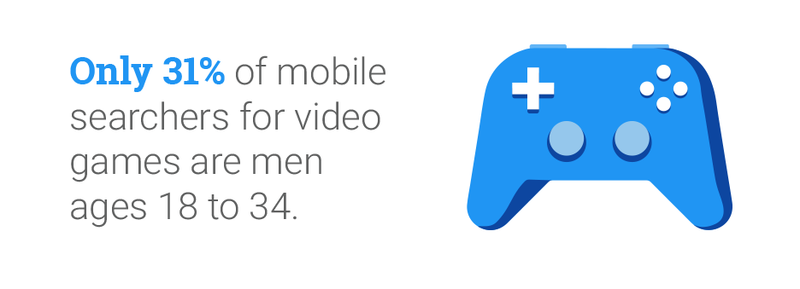
The words “the customer is always right” is a phrase that every retailer knows all too well. And whilst in reality, we know that this isn’t always true, we do know it’s vital to make sure the customer is happy. In a modern world, this means making sure you can provide a unique customer experience that makes your brand stand out from the rest.
Intent-based marketing is an excellent way to do this.
Marketing like this is all about the user. It’s about involving the customer through their insight and value and is designed to create an experience, rather than take away from it. Like using a multilingual approach, intent-based marketing is about responding to client individuality, rather than just pushing products on every customer that pops up. As we all know, pushiness just puts people off. Intent-based marketing, however, is subtle and creates a unique experience.
Take A Modernized Approach
Intent-based marketing means saying goodbye to ‘in-your-face’ annoying marketing campaigns. It identifies crucial data about a customer and is about understanding them and talking to them on their level. It’s also about building relationships with customers and engaging with them in a way that will drive sales.
The outcome of this kind of marketing means you can:
- Focus on current behavior
- Prioritize marketing tactics
- Create personalized content
- Share relevant products
- Respond quickly to trends and shopping habits
It works through marketers directing campaigns based on customer intent. So, you know they already like the product. They just need a little push to make the purchase. And as they are being targeted with something they have already shown interest in, it becomes a unique experience to them.
Using this marketing within your company's brand communication strategy ensures customer loyalty, and let people know that you are a firm that has the goods people want.

Source: Unsplash
Know the Customer
Unfortunately, it isn’t as simple as sending a generic email after a customer views, for example, apps like Slack on a communications software website, or summer sandals on a shoe site. It’s about understanding a customer and what their intent is.
Knowing how people behave and why they make the decisions they do allows for a personalized shopping experience. Imagine if you had just spent 30 minutes looking into buying a long-lasting backpack in the sale, just to be sent adverts and emails about full price tote bags. The ads you were being sent would mean nothing to you, so you would simply ignore them.
Yet, if you had been shown an ad for backpacks that offer special pricing, you may reconsider your sale.
Why? Because the advert reflected your behaviors. It realized you were looking for something that was reduced and something that was sturdy. Basically, it honed in on your intent and offered a solution that was personal and engaging.
Ultimately, intent-based marketing is about making each interaction into a customer-central journey. This turns an experience, whether it be positive or negative, into a valued opportunity.
Reasons to do this include:
- Empowering a firm
- Empowering the customer
- Adding value to an experience
- Reaching outcomes quicker
- Creating brand loyalty
For this type of marketing to be successful, customers must be acknowledged and marketers must gain insight from start to end.
Consider Context
As with most things in life, purchasing decisions are often based upon context. Is the weather changing, meaning people need more winter clothes? Are more companies going remote and want to invest in video marketing tools? Is it Veganuary and people are looking to be healthier? Understanding people’s mindsets can help you to know more about why they are making certain purchases. It also helps you to follow through with pushing sales in an individualized way.
Know How to Target
Again, this is about really knowing the customer. So, when sending out specifically targeted products, you need to understand what it is your customer wants. You need to consider where a person is based, their age, their occupation, gender, etc.
There is no point in targeting a customer with English Breakfast Tea if they have a history of browsing RPA software from Ohio. The two are not related at all. And, chances are, the demographics of the customers will be totally different too.
Focusing on a specific audience will be much more worthwhile and will create a better experience for both the customer and retailer. Doing this will give your brand a better name. It will also improve lead generation techniques. It also lets customers know you have the products they are actually interested in.

Source: Think With Google
Analyze Behavior
One of the great things about the modern age is that tech gives us the ability to store masses of data. Of course, this means that we need to know how to enhance cybersecurity. And anybody storing data needs to make sure they are doing what they can to protect that info. However, having all that data means that we can analyze behaviors and make personalized customer decisions based on them.
It’s a really good way to gain insights. It helps marketers discover which campaigns are doing the best and who is interacting with what. Looking at the behaviors of customers aids with knowing who to target with which product by assessing user journeys. It also sees how each demographic interacts with sites and products. It even shows how people use different platforms and often brings up surprising results.
For example, 88% of people aged 18-29 use social media. That’s a fact that’s to be expected. But also, 64% of people aged 50-65 also use at least one form of social media. This is a percentage that may be higher than some teams realize. So, perhaps if you have been relying on emails to target baby boomers, perhaps it’s time to analyze your data and use Facebook too.
Video chats and remote workplaces have seen a huge boost in recent times too as well as social media. Advertising Facebook workplace alternatives to a remote employer would make a lot of sense in this context.

Source: Think With Google
Add Value to Bad Experiences
If people aren’t buying a product straight away, there will be a reason behind this. It could be that whilst browsing for HR tools for collaboration, the site kept crashing. Or perhaps the shipping for the new TV they were looking at was more expensive than they had thought. It might even be that they had a bad customer care experience with a team member.
Negative customer experiences will inevitably happen with every single business. But the key to making a firm stand out is to turn this negative experience into a positive one. And this means creating a valuable and unique experience for the customer.
A great way to deal with this is to assess the issue and suggest alternatives. Say a customer is having a bad experience because they have been on hold for 30 minutes. You can suggest they can contact a member of the team over social media instead. Or, if there is cart abandonment just before a sale, send them a money-off delivery voucher.
What this means in turn is that alternatives forms of advertising that work better for the customer will start to appear. Using alternative methods, such as SMS in eCommerce or personalizing email ads will show the customer you really do care. It also shows that you are trying to give them a positive experience.
Remember, the key to adding value to a negative experience is realizing the original intent. Then doing what you make sure the customer intention is still fulfilled.
Use Customer Data After Sales
All too often, marketers are often eager to use data before a sale to make sure customers are getting a product that will make them happy. However, many tend to forget to use data after a sale as part of improving the customer experience. As intent marketing is all about customer interest, isn’t it just as important to understand post-purchase behavior too?
After any sort of project, we work on, whether we are working on something for a client or we are working on team projects, we see what worked. Using that information, we make changes and improve the experience for everyone involved. We want to make sure that we understand the intent and that we have fulfilled the objective. This tends to mean that next time around, we have better outcomes and people are just that bit happier. So, why not do the same with customers?
Analyzing a customer's post-purchase helps you understand how well your campaigns work. And how happy your customers really are. As well as decipher any targeted points you may have missed.
A way to do this is to look at what customers are looking at after a purchase. By then examining the products they have already bought and the ones they are wanting to buy, you can create even more personalized messages. This time around though, you can make it even better for the buyer and discover even more about their intent without missing off any points.
Let’s say, for example, a person has just bought a swimsuit. This could be for exercise, it could be for a competition or it could be for a vacation. However, after a purchase, they go back on your site and start looking at flip flops and summer hats. This builds more of a picture that they are, in fact, going on vacation. This means you can tailor products to them. This might mean suggesting sunblock or sunglasses and fulfilling their intent of purchase even more than before.
In using more engaging and relevant data, customers will know they can trust you with the products they want to buy. That could be through suggesting solutions like fuze or offering accessories as add-on.

Source: Unsplash
Bring in New Customers
Another good point about investigating post-purchase data as part of intent-marketing is that it can help bring in new customers too. This is because you can see which demographics are buying what and then create personalized customer targets based on that.
For example, let’s say there has been a rise in men from New York aged between 40-60 looking at free communication tools. If a new client signs up to your site and fits those demographics, you can send them personalized content. It can be filled with content like “Glip Vs Chatwork: The Ultimate Winner”. Or “Is Slack good for a big team?”
This not only reflects on modern trends but creates a tailored solution that starts customers on a positive journey. You can even pass this information onto wholesalers who can predict purchases and keep on top of any product SKU. This is all something that, in the end, boosts sales, keeps customers happy, and creates a modern-day firm.
By using intent-based marketing with consumers they have a better shopping experience. They will also build a long-standing relationship with a firm they can trust. What’s more, by making suggestions based on behavior, you will be able to create a unique experience that benefits both you and the customer.
Looking at conduct post-purchase ensures that you are improving on the user experience each and every time they visit. It also gives you the ability to predict what new customers of the same demographic might want.
Remember too that one of the really great points about intent-based marketing is that it has the ability to turn a negative into a positive — simply by making sure the user intent is still fulfilled through alternative methods.
Generally, intent-based marketing is a great way to build relationships and leave customers happy.





Leave a reply or comment below